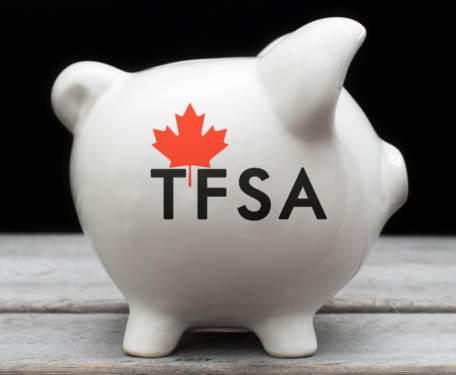Buyers and sellers often concern themselves greatly with the “price” in a sale of a business. However, an equally important factor that has a large impact on the actual “value” exchanged between the two parties in a sale is the form or type of “consideration” exchanged for the business, and the timing of when the consideration is settled or paid out in cash. In this article, we will discuss various forms of “consideration” that are often seen in a business sale transaction, and how they impact the value exchanged.
When a notional business valuation is prepared it is usually under the concept of a “fair market value”, which is usually defined as the highest price, expressed in terms of cash equivalents, at which property would change hands between a hypothetical willing and able buyer and a hypothetical willing and able seller, each acting at arm’s-length in an open and unrestricted market, when neither is under compulsion to buy or to sell and when both have reasonable knowledge of relevant facts. However, in open market transactions many of the factors are not always so simple and the purchase price may be paid in a number non-cash forms. As a result, the economic value of the purchase price may be different from the face value of those items and should therefore be assessed on an equivalent cash basis.
Cash
The simplest type of consideration seen in business transactions is cash, paid immediately at the time of closing. When a business is sold and the seller receives the entire purchase price upfront in the form of cash from the buyer, the value to the buyer and seller is equal to the amount of cash exchanged. All-cash transactions offer the lowest risk to the seller, as the cash is received immediately and the purchase price is certain. However, all-cash transactions are generally risker for the buyer. If the business does not perform as expected after the sale, the buyer may not realize the full value of the purchase price paid. Additionally, it is often difficult for a buyer and seller to come to an agreement on the price that should be paid for a business.
As a result, business sales are often structured to include multiple types of consideration. Often, a partial upfront cash payment is made, and the remainder of the purchase price is paid in other ways, such as:
- Holdbacks • Promissory notes or vendor takebacks • Earn-outs • Share exchanges, either publicly traded or privately held companies Holdbacks Holdbacks are common in transactions for privately held businesses and normally protect the buyer against deficiencies in working capital, debts that were not paid off prior to closing, and undisclosed or unknown liabilities and contingencies such as legal or environmental.
Holdbacks are an effective way to manage risk in a transaction and usually represent only a small portion of the purchase price. Holdbacks tend to be released over an agreed upon time period ranging from six months to two years.
Promissory notes or vendor takebacks (VTB) are forms of debt issued by the seller to the buyer. The promissory note or VTB may or may not bear interest, and the interest may be fixed or variable, and may be higher or lower than comparable commercial rates. VTBs arise when a portion of the negotiated purchase price is withheld by the buyer and is paid to the seller over a period of time, or entirely at a later date.
Buyers often favour VTBs as they lower the up-front investment (i.e., cash) required, while still satisfying the purchase price negotiated between the parties. VTBs are also favourable to buyers, as they tend to motivate sellers to ensure a smooth transition after the sale, as the seller retains a portion of the risk related to the business. Further, when using bank debt to finance the purchase of a business, the lender will typically require at least a portion of the purchase price paid through a VTB in order to ensure the interests of the buyer and seller are aligned. VTBs can also be beneficial to sellers in a number of ways. By agreeing to accept a VTB, sellers are able to lower the up-front capital needed by potential buyers, creating a more competitive sale process and attracting multiple potential buyers. Additionally, in a VTB, the negotiated interest rate may lead to higher returns for the seller than if the entire amount was received in cash up-front.
The economic value of a VTB may be different from the dollar amount, or face amount, that is financed. In order to determine the fair market value (i.e., cash equivalent) of a VTB, the payments of future principal and interest should be discounted using a market interest rate. The sum of the present value of these payments is equal to the total fair market value of the VTB loan.
Earn-outs
An earn-out is when a portion of the purchase price is paid over time based on the prospective revenues, earnings, or some other measure related to the post-acquisition results of the acquired business. Earn-outs are commonly used in a business sale to bridge a pricing gap between the buyer and seller, where the parties may disagree on the future prospects of the business. An earn-out effectively shifts the risk from the buyer to the seller because if prospective results are not realized, the purchase price is reduced. Similar to a VTB, in order to determine the fair market value (i.e., cash equivalent) of an earn-out arrangement, the expected earnout payments should be discounted using a discount rate that considers the risk that payment will not be satisfied, as well as the general risk of the business.
Share Exchanges
When a business is sold to another corporation, the corporation may offer its own shares as currency to finance a transaction leaving the seller with an interest in the combined company after the transaction has taken place. Where the seller is a privately held company, and the buyer is a public company, the seller is typically able to assess the value received if the shares received in exchange are freely tradable. However, the valuation exercise becomes more complex where the seller is restricted from selling the shares for a period of time and/or the public company buyer has a relatively small market capitalization, thereby causing the block of shares held by the seller following the transaction to be somewhat illiquid. In these cases, the value of the publicly traded shares that carry restrictions on trading or are illiquid is generally lower than their face value.
Determining the fair market value (i.e., cash-equivalent) of shares received in a share exchange is particularly complicated where the buyer is also a private corporation (i.e., not publicly traded). In effect, it becomes a relative valuation exercise between the buyer and seller. These situations are further complicated when a controlling interest in a privately held company is sold in exchange for a minority interest position in a privately held, and generally larger company. In these situations, a shareholders agreement becomes extremely important as they typically provide a means for the seller, who ultimately holds minority interest of the combined company, to sell their shares to the remaining shareholders for their prorata value (i.e., without a minority or liquidity discount). In the absence of a shareholders agreement where shares of two private companies are exchanged, the minority position that the seller receives may be worth less than pro-rata value of their shares in the combined company.
Conclusion
Buyers and sellers typically employ a wide range of transaction structures involving different types of consideration such as contingent and non-cash. When assessing a potential transaction as either a buyer or seller, it is important to consider the types of consideration being offered and the associated risks with each consideration to properly evaluate the merits of the transaction and the economic value being exchanged. Additionally, the tax consequences of a transaction varies depending on the transaction structure, and should be discussed with a designated tax professional.
To receive more information on the topics discussed in this article or assistance in determining the most appropriate structure for your business purchase or sale, please contact our valuation and tax specialists.









